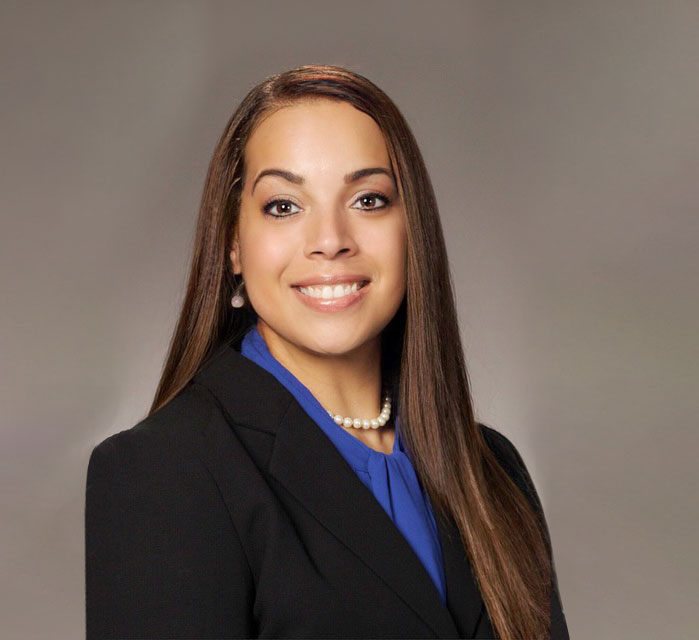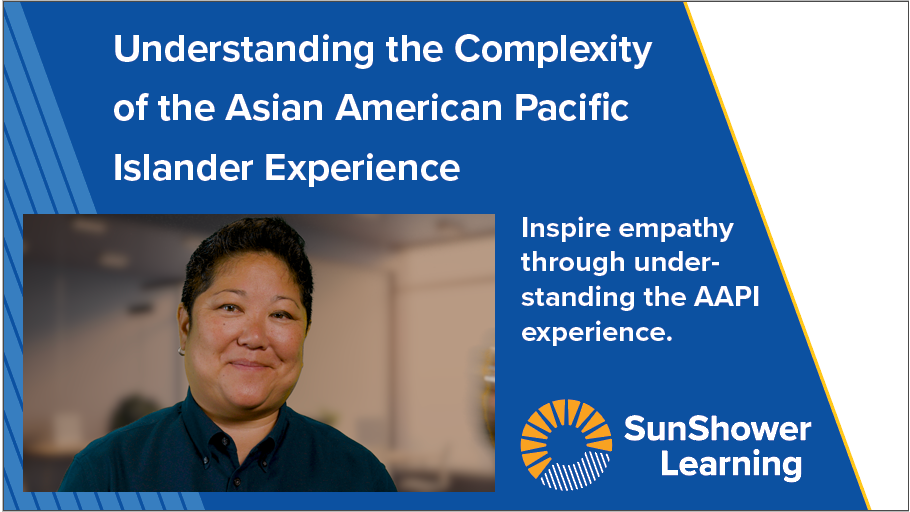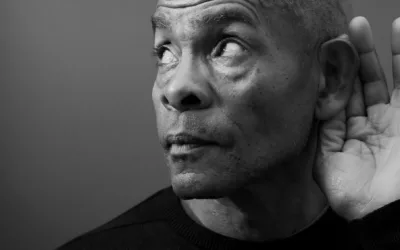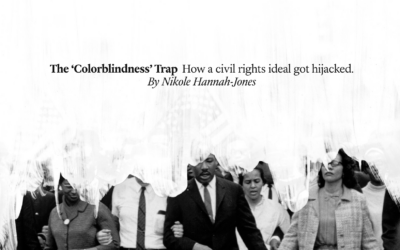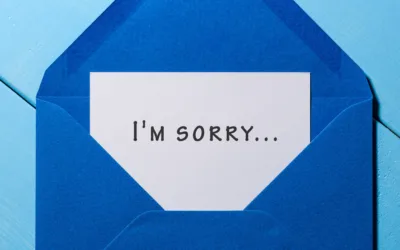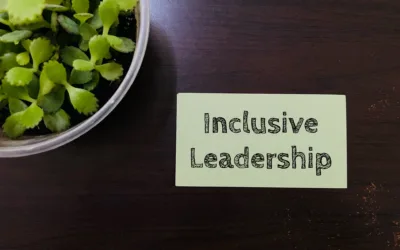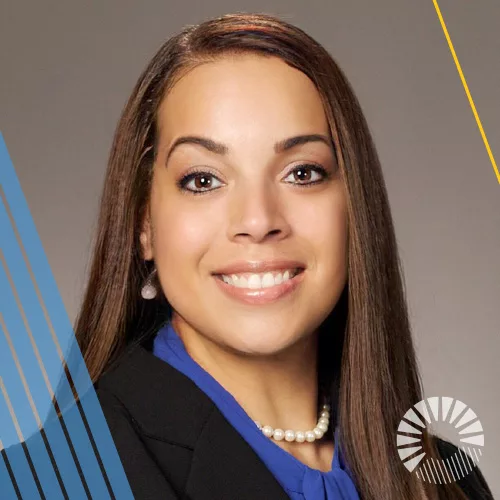
Right Where She Belongs
How Lisette Martinez creates an inclusive culture and a world of opportunity as Jefferson Health’s Executive Vice President and Chief Diversity Officer
By Gina Miller
The innate desire to belong
The year was 1984 in Ypsilanti, Michigan when the world fractured in front of Lisette Martinez, leaving her caught in the middle, unable to process the divide, let alone choose a side. She had looked forward to her sixth-grade camping trip for months because it was a chance for all the classes to travel together. But the anticipation of a unified experience that held the promise of new friendships and fun adventures was replaced with shock when Martinez entered the campground cafeteria for lunch on the first day. She was stunned to see all of the Black students on one side of the room and all of the white students on the other, and she had no idea where to sit in this segregated environment. The situation rendered her immobile, her feet frozen in place and her mind suddenly aware of a social construct that left her completely unaccounted for.
A mission takes shape
Martinez went on to graduate from college and forge a career in procurement. Fresh out of school, she became a buyer and a purchasing manager in the retail industry for companies like Toys ‘R Us, Chiquita Brands and Luxottica (the parent company of LensCrafters and Sunglass Hut), though the memory of that cafeteria stayed with her.
While employed as a buyer at Luxottica, Martinez became aware of the company’s plans to form a new division. As she described, “They were looking for diversity and inclusion managers, and my first thought was ‘This Italian company is starting a diversity department? What’s going on here?’” But the word inclusion sparked her interest. “It took me right back to that cafeteria,” Martinez explained. “I was born and raised in Detroit, Michigan. I was born in ‘73. And back in those days, Detroit was just Black and white. I’m from a Hispanic family, and we were the only Puerto Ricans in my neighborhood. There were no Puerto Ricans at my school, and people would always ask me, ‘What are you?’ They would mistake me for Indian or Black or mixed, and I struggled to explain my ethnicity. I never heard people speak the language that we spoke at home, and no one knew the types of food we ate. And so I never really saw myself. All of the cultural aspects of my family didn’t exist outside of my home. That sixth-grade camping trip made me come face-to-face with some tough questions about my ethnicity, my race and my sense of belonging.”
Martinez recounts that decades-old memory as though it were yesterday. She explained how an empathetic counselor took note of the scene and stepped in. She ordered the kids to mingle for the rest of the trip. As Martinez described, “That changed my perspective of where I fit in. I felt like I was part of something. I felt like I belonged. So, when I saw the word inclusion in the Luxottica job description years later, I remembered this experience so vividly, and I knew I wanted everyone to feel the way I felt on that trip. I wanted everyone to feel a sense of belonging, and I wanted to be part of that mission.”
Going all in on diversity, equity and inclusion
Despite having no experience in diversity, equity and inclusion (DEI), Martinez decided to act on her feelings. She explained, “I wanted to make this happen. And Cincinnati was a great place for me to be when all of this took place because there are so many Fortune 500 companies there with great DEI leaders – Procter and Gamble, Kroger, Toyota and Johnson & Johnson. I met with all their leaders to learn how to create operational plans, to learn how to make DEI part of the institution’s fabric and to learn how to create real impact. I made the decision that this is what I wanted to do, and Luxottica gave me the job.”
This was in 2007, and the career pivot certainly paid off. In the ensuing years, Martinez made her way to Jefferson Health and Thomas Jefferson University and now serves as their Executive Vice President and Chief Diversity Officer. In this role, she is responsible for the DEI strategy for both the university and the health system. She and her team build anti-racism curricula within the university, and they help students learn how to address stereotypes, microaggressions and unconscious bias. By applying solid business strategy, Martinez has created a sustainable way of planning, implementing and optimizing DEI across the entire enterprise.
Weaving DEI into the fabric of an organization
Martinez continuously looks for ways to be accountable for the work by creating specific goals and metrics centered around making a real impact. “I’m a strategist,” she explained. “I started my career as a buyer in corporate America, being able to see things and learn things from a global perspective. I learned that if you don’t embed something into the fabric of the organization, if you don’t build something that’s perceived as integral to success, then it’s never gonna get done.”
Among Martinez’s long list of accomplishments, she has created and implemented the first board-approved, comprehensive DEI plan, created DEI councils, implemented an initiative to reduce disparities in patient care, convened an annual summit, established mentorship programs, established “Supply Chain Connect” (a program that prepares local and minority-led businesses for contracting opportunities with Jefferson) and established the first dashboard to track and improve diverse hiring across the enterprise. For these reasons and more, Martinez was named one of 2022’s Top Diversity Leaders by Modern Healthcare.
Words of wisdom from an award-winning DEI executive
When asked to share the work she’s most proud of, Martinez replied, “I’ve really stuck to my gut about forming councils and committees to be part of an organizational structure and strategy. I’ve created an operational plan for leader-led councils that have action plans that are scored on an annual basis. And I’ve built sustainability into the work. Let me give you an example of something that was a huge success here at Thomas Jefferson University. Universities are made up of different colleges, and each of those colleges tends to have a different diversity need and a different diversity committee, but they’re typically not structured within the governance of the university. I wanted to make sure that each DEI committee was written into the bylaws as a standing committee, and I wanted each dean to be held responsible for the effectiveness of that committee. So we worked with the provost, and the president of the university worked with the bylaws committee so that each of those deans is the executive sponsor and holds a seat on the governance committee. People say that everything that gets measured gets done, but that’s not true. Everything that’s connected to a KPI, an incentive or a performance review is what gets done.”
Martinez continued, “The other big thing is to operationally place your diversity councils and teams across the enterprise, and then the members of those teams also become your extended team. I meet with everybody once a month, and they report on how things are going. But I also keep track of my own commitments. I report directly to the CEO, and we meet monthly. I also routinely meet with the CHRO, the CRO, the CMO, the president of the university and the president of the health system. My business plan revolves around making sure I’m working to meet their needs.”
DEI training that works
Another arrow in Martinez’s quiver is DEI training. She has found SunShower Learning’s training programs to be essential in helping her to build an inclusive, equitable workplace. As she described, “It’s important to me to provide tools for people to practice and implement and apply to the work we’re doing every day. For example, we use the Ouch! That Stereotype Hurts program and its tools of how do you assume good intent? How do you ask a question? Ouch! helps us build scripting for folks to actually utilize. It’s important because you hear all these trainings and all these webinars in which people say why this is all-important, and they give you the same definitions. Well, gosh, dang it! We’ve heard all this information. How do we do it? I already know what a stereotype is. I already know I have biases. How do I manage my biases? SunShower provides the actual tools that help people move forward.”
On the same day that we had this conversation with Martinez, an email arrived in her inbox, attesting to the very real and personal impact of DEI training. It was from a revenue cycle supervisor at Jefferson NE who was interested in a promotion but initially doubted her chances of success. She wrote, “I remember taking one of the courses for inclusion that was mandatory, the story of one character that was trying to give his opinion but it was difficult for him because English was his 2nd language and the way it was presented as a professional with vast knowledge in the area and all the good things this professional could bring to the table. I felt like that character, that was me.” She went on to say, “Well, today I can say that I’m that professional that was taken into consideration, I got an interview for a supervisor position, and … I’m proud to tell you that I got the position!!”
How DEI helps fulfill the mission of health care providers
In Martinez’s view, DEI is particularly important when it comes to health care. She explained, “I noticed that clinicians sincerely wanted to connect with patients who were different from them. I would get nurses and physicians wanting to get the cultural backgrounds of their patients, and I had to talk to a lot of folks to better understand how to incorporate cultural competence without creating stereotypes. I also wanted to capitalize on my belief that we all share a common humanity despite our differences. All things considered, I wanted to help clinicians communicate better and build trust with their patients because if patients don’t trust you, they will not adhere to their treatment plans.”
Martinez finds wisdom in the Cultural Sensitivity Pocket Guide, which was published by the Joint Commission, the nation’s oldest and largest standards-setting and accrediting body in health care. The guide promotes a communication method for clinicians to ask the patient specific questions. As explained in the guide:
“When it comes to health care, the United States might have great technology and dedicated, intelligent health care staff, but these advantages are lost if our patients can’t understand the why and what of their care.
If a patient, because of a cultural disconnect, can’t appreciate what we’re prescribing or why it’s necessary, or if the information is delivered in a way that inadvertently frightens or offends the patient, how can we fulfill our mission as health care providers?”
The guide is divided into four categories:
- Call: What do you call your problem?
- Cause: What do you think caused your problem?
- Cope: How do you cope with your condition?
- Concerns: What are your concerns regarding the condition and/or recommended treatment?
Martinez provided this example: “Among Asia’s Hmong population, epilepsy is seen as a spiritual gift. The spirit catches you, and you fall down. It’s believed to be a good thing. But if a patient is having a seizure, and you ask the patient, ‘What do you think is happening?’ and they say that the spirit is catching them, that reveals a cultural belief. That’s an educational opportunity for the doctor to explain that the cause of a seizure is an electrical disconnect that happens in the brain, and then the doctor can talk to the patient about why that’s occurring. The doctor can go on to ask the patient how they’re coping with their ailment. And people from many cultures do things that they may be embarrassed to tell a doctor – like how my mom used to put tequila on my brother’s gums when he was a baby. Those practices, however, may interfere with the medication that’s being prescribed. Or you may have a patient who comes in with a bunch of marks that look like they resulted from a smack. By asking the four questions, the doctor may learn that this patient rubs coins on their skin to release bad energy; it’s a cultural practice within their family. By keeping those questions in mind, doctors can gain cultural understanding and build trust.”
Inclusion matters when it comes to patients’ treatment plans
When patients have faith in their doctors and in their treatment plans, better outcomes are likely. And one way to make this happen is to include patients in decisions about their treatment plans. As Martinez explained, “That’s a big thing that’s going on with all health systems in this country and in the world. Our clinical teams are understanding how important it is for the patient to be part of their medical treatment plan, and it’s really helping to get patients to adhere to treatment. You have to make them part of the team. You have to listen when they say they don’t have money for certain treatments or when they can’t adhere to the plan for whatever reason. Many people don’t have the convenience of having a grocery store nearby, and transportation may be an issue. Many people don’t have green spaces to enjoy. And, no, they can’t simply hop on a Peloton or afford a gym membership like some people. So how do we really help build the resources needed to help our patients get the treatment they deserve? And what is it that they need? Is it mental health resources? Is it a place to live? There needs to be a well-rounded plan that takes into account the patient’s lived experience and their perspective. This can only be accomplished when patients are included in these decisions.”
DEI is neither about political correctness nor is it about changing people
As we wrapped up our conversation, Martinez shared some final thoughts. She explained that she’s made a conscious decision to be a safe person with whom to talk. As she described, “If you ask me a question, I want you to be curious. I’m not gonna shame you. I’m not gonna tell you I’m offended. I’m gonna make our conversation a teachable moment, whether it’s something you’re teaching me or I’m teaching you. I’m not gonna be aggressive toward you. We’re gonna talk, and that’s what has helped me move forward and change a lot of lives in senior leadership. I’ve allowed people to talk to me and ask me questions that they always feared. I wish we could start a revolution around helping people to be more accepting and allowing them to be curious and genuine and allowing them to say how they feel. DEI is not about political correctness; it’s about caring for one another.”
Martinez also recognizes that DEI is not about changing people. As she explained, “When I first started working in DEI, I was very young, and I thought, ‘If I can just change people, everything will be rainbows and butterflies, and we can all live and coexist peacefully in the same world.’ That was my big mistake. I thought I’d simply teach people these skills and then they’d apply them. When that didn’t happen, I’d get frustrated and anxious. Eventually, I learned that I can’t change people, but I can change the environment. I can’t change the world, but I can start at Jefferson. That realization changed my whole perspective, and I became a better DEI leader as a result.”
***
A native New Yorker who married into a Gullah family in the Lowcountry of South Carolina, Gina Miller evolved her natural interest in culture, community and social justice into a deep commitment to diversity, equity, inclusion and belonging in the workplace and beyond. As an avid reader, prolific writer and community volunteer, she channels her thoughts and emotions into various forms of storytelling. This includes writing articles for SunShower Learning, which offers specialized, best-in-class diversity, equity and inclusion training to help organizations evolve.
***
Testimonial letter from a Jefferson employee about the impact that diversity training and an inclusive workplace culture have had on her life
Hello Lisette,
I would like to thank you for the great job that you and your team are doing on creating awareness. I’m proof that the message has been received and embraced across the enterprise. I’m a professional coming from another country and not as articulate in English as I would like, I thought my chances of getting promoted to another position were far from reality. When we were still in the office my Manager at that time saw my potential and made me feel empowered, but as we moved to work from home, and departments were reassigned I lost that sense of empowerment. I got a new manager and a new supervisor who didn’t know me in person, and I thought that it will be almost impossible to show my expertise and knowledge through limited interaction with them. I remember taking one of the courses for inclusion that was mandatory, the story of one this the character that was trying to give his opinion but it was difficult for him because English was his 2nd language and the way it was presented as a professional with vast knowledge in the area and all the good things this professional could bring to the table. I felt like that character, that was me.
Well, today I can say that I’m that professional that was taken into consideration, I got an interview for a supervisor position, and I went through the process, with fear but that never stop me from trying, thanks to some of my peers and my old manager I stood up and brought all my expertise and knowledge to the table and it was seen. I’m proud to tell you that I got the position!! I’m more than grateful to be part of the Jefferson Family, for the opportunity I got from this Job since day one. Thanks to Jefferson I was able to buy my house, and thanks to this opportunity I will be able to keep that house and give my kids a better future.
I’m a single mom of three and Jefferson has kept me afloat. I hope my story can be used as an inspiration to others.
More From Our Blog…
Understanding Employee Responses to DEI Initiatives: Insights and Strategies
A recent study sheds light on a previously underexplored aspect of DEI training. While much focus has been placed on the facilitators, trainers and the content of DEI programs, this study examines how employees actually respond to the training. Published in Harvard...
SHRM’s Removal of “Equity” From DEI Framework: A Step Backwards Amid Growing Backlash
In a stunning step in the wrong direction, the Society for Human Resources Management (SHRM), the world’s largest HR association, has removed “Equity” from its “IE&D” framework. What message does this send, especially amid strong pushback against Diversity, Equity...
Navigating the Shifting Landscape of Diversity, Equity and Inclusion Programs
In the midst of the evolving landscape of corporate diversity initiatives, there's a seismic shift underway. The once-prominent acronym "DEI" - representing diversity, equity and inclusion - is notably absent from many company discussions. As explained in the article...
A Groundbreaking New Course: Understanding the Complexity of the Asian American Pacific Islander Experience
With over two decades of experience in the educational sector, Hideko Akashi, founder and lead consultant at Liberation Consulting, has been a steadfast advocate for diversity, privilege, social justice, inclusion and equity. Now, she's opening a new chapter with the...
The Deafening Silence of DEI Allies: A Call to Action in Troubled Times
As we commemorate the legacy of Rev. Dr. Martin Luther King Jr., his poignant words echo through the corridors of history, reminding us of the profound impact of silence in the face of injustice.” In the end, we will remember not the words of our enemies, but the...
DEI LEAP: Empowering Leaders Through Turbulent Times
DEI LEAP: Empowering Leaders Through Turbulent Times As we all know, 2024 has brought a wave of attacks against DEI. A handful of outspoken critics, such as Elon Musk, are misrepresenting DEI and attacking the strategies and practices that are creating more equitable...
The Colorblindness Trap
Read. This. Article. It's important. The Color Blindness Trap: How a civil rights ideal got hijacked Nikole Hannah-Jones is a domestic correspondent for The New York Times Magazine focusing on racial injustice. Her extensive reporting in both print and radio has...
The Unbearable Lightness of the “I’m Sorry if You Were Offended” Apology
Have you ever come across that non-apology apology? You know, the one that goes, "I’m sorry if you were offended," or its close cousin, "I’m sorry that you…" These non-apologies aren't just weak; they can actually inflict more harm and exacerbate hurt feelings. They...
The Power of Diversity: McKinsey’s Latest Report Reinforces the Business Case for Inclusive Leadership
In an era where corporate social responsibility is no longer just a buzzword but a fundamental aspect of successful business strategies, McKinsey's latest report, "Diversity Matters Even More: The Case for Holistic Impact," underscores the undeniable link...
“Laying Low” Is the Wrong DEI Strategy
“The ultimate measure of a man is not where he stands in moments of comfort and convenience, but where he stands at times of challenge and controversy.”- Martin Luther King, Jr. In an era marred by politicized attacks on diversity, equity and inclusion (DEI), Shaun...

